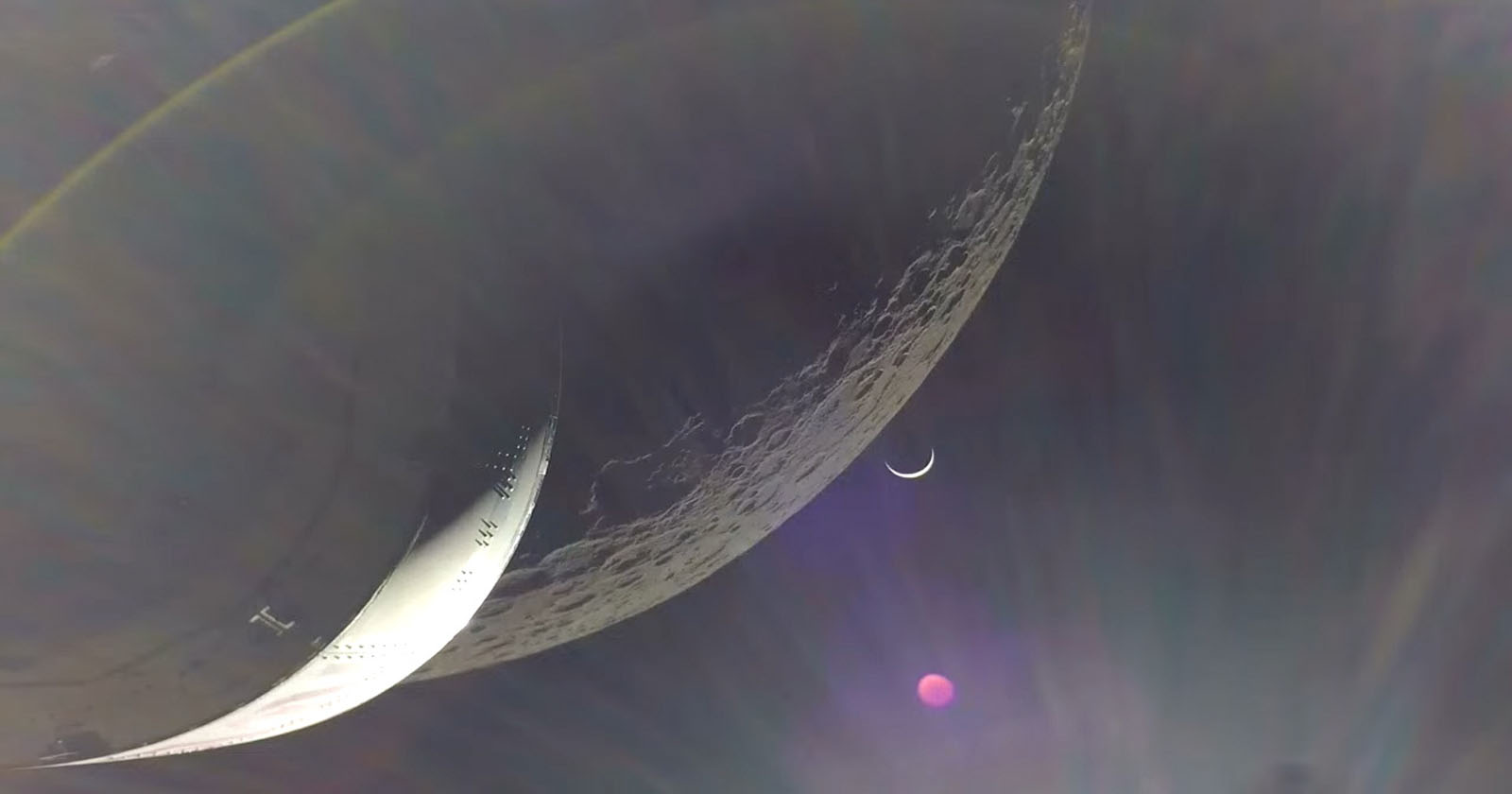NASA's Orion Spacecraft captures peeps at the moon on its way home
Artemis 1 marks the return of lunar exploration and if successful, man could walk on the moon again

We recently reported that Nasa’s Orion Spacecraft was fitted with consumer cameras to capture photos on the Artemis 1 mission. Since then, Orion has completed several lunar fly-bys, performed a flight test around the moon, has traveled the farthest distance it will travel from the earth – 268,563 miles, and all the while it has been capturing photos of the moon and our blue planet.
As it nears the end of its journey, Orion has just sent back another stunning photo – this time a close-up of the moon's surface as it prepares for its return home. In the distance, you can see the Earth rising behind it in a crescent moon shape and a small red dot is just a camera artifact (digital, unintentional changes as a result of the inner workings of your camera).
It was captured during a 3-minute, 27-second return powered fly-by burn that will ensure the spacecraft’s splash landing into the Pacific Ocean off the coast of California on December 11.
• Check out the best telescopes for astrophotography so you can shoot deep space at home
Mike Sarafin, the Artemis 1 mission manager said, “At present, we are on track to have a fully successful mission with some bonus objectives that we’ve achieved along the way. On entry day, we will realize our priority one objective, which is to demonstrate the vehicle at lunar re-entry conditions, as well as our priority three objectives, which is to retrieve the spacecraft."
In total, Orion was fitted with 24 cameras, each carefully positioned to capture different views of the spacecraft itself, the earth and moon and what the astronauts might see on a future manned mission.
With the 25.5-day mission almost at an end, Orion will reenter Earth’s atmosphere at a staggering 25,000mph and its heat shield will experience temperatures up to 5,000 degrees Fahrenheit. Just before its re-entry, the crew module and service module will separate. The crew module (which on this mission is unmanned) will hopefully, safely return to earth while the service module will burn up.
Get the Digital Camera World Newsletter
The best camera deals, reviews, product advice, and unmissable photography news, direct to your inbox!
Artemis 1's trajectory is designed so that it lands in an area of the Pacific Ocean free of shipping lanes, land and people. Three silk parachutes 116 feet in diameter will be deployed at 9,500 ft while the spacecraft is traveling at a speed of 130mph to slow the spacecraft down to just 20mph for its splashdown. If re-entry and landing is a success, the next Artemis mission could very well see man on the moon again for the first time since 1972.
These are the best light pollution filters for night photography that will help you capture clear photos of the night sky.

Having studied Journalism and Public Relations at the University of the West of England Hannah developed a love for photography through a module on photojournalism. She specializes in Portrait, Fashion and lifestyle photography but has more recently branched out in the world of stylized product photography. Hannah spent three years working at Wex Photo Video as a Senior Sales Assistant, using her experience and knowledge of cameras to help people buy the equipment that is right for them. With eight years experience working with studio lighting, Hannah has run many successful workshops teaching people how to use different lighting setups.
